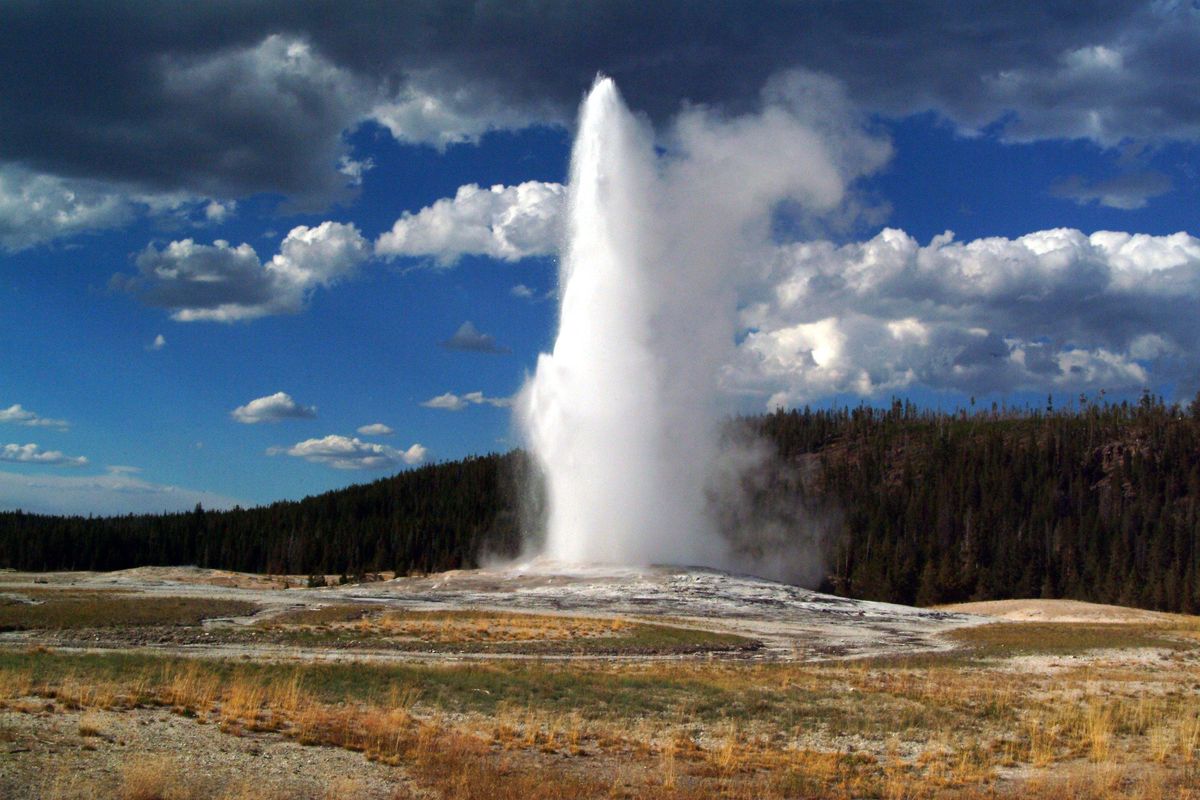Yellowstone Park under pressure from crowds, budget

The park is coming off two years of record-high visitation and Superintendent Dan Wenk does not believe the flood of interest has peaked.
It’s the superintendent’s job to assure that Yellowstone isn’t loved to death and doesn’t fall apart.
Yellowstone received a record 4,097,711 visitors in 2015 – fueled by more than 225 tons of ice cream sold in the park. The annual visitation record was surpassed in October this year when it hit 4,221,782.
Yellowstone opened in 1872 and is the country’s oldest national park. The records summer of 2015 caused overcrowding from road to bathrooms and prompted lots of complaints from the public.
But Wenk said the park beefed up its staffing for summer 2016, which went more smoothly.
“We learned a lot from the summer of 2015,” he explained. “Adjustments were made and they made some of the congestion better.”
But while offering a long list of the park’s assets, he presents an equally long list of work that’s waiting in the shadows to be done when time and money is available.
Yellowstone covers more than 2.2 million acres, an area larger than Delaware and Rhode Island, and is the core for a nearly-intact ecosystem of 18 million acres.
The park has $3.5 billion in facilities, including 475 miles of paved and unpaved roads, more than 900 historic buildings, 2,400 lodging rooms, 2,300 front country campsites and 300 backcountry campsites.
The park is operated by more than 4,000 employees of both the National Park Service and the concessionaire.
Thirst and nature’s call are answered by 23 water treatment and waste water treatment facilities with eight major plants treating more than 300 million gallons of water and wastewater loaded with 4,000 tons of solid waste a year.
Of course, Yellowstone has a world-class assortment of the other kind of nature calling and roaming around the 10,000 thermal features and more than half the world’s geysers.
“We have the greatest wildlife display in the lower 48 states,” Wenk said. “More than 5,000 bison and 30,000 elk that migrate into the surrounding three states – Idaho, Montana and Wyoming.
“A hundred wolves live primarily in Yellowstone with 350 wolves in the ecosystem and 1,600 in the three-state area. We have more than 700 grizzly bears.”
The public gets involved in Yellowstone’s spectacle through nine visitors centers, more than 35 miles of front-country boardwalks and 1,100 miles of backcountry trails.
Of course, Yellowstone’s contribution to the regional economy is equally huge. When combined with adjacent Grand Teton National Park, the complex generates more than $1 billion for the area within 60 miles of the parks, Wenk said.
But money isn’t necessarily flowing into the park budget. “The maintenance backlog in Yellowstone exceeds $1 billion, mostly on upgrading the roads to handle today’s traffic volumes in a safe manner while respecting the natural resources of the park,” Wenk said.
“The annual federal appropriation for operation is $36 million, but Yellowstone costs about $80 million to operate,” he said. The park tries to make up the difference with earned revenue from entrance fees, concession franchise fees, fishing licenses, utility charges, donations and other sources.
“We expect federal appropriations to remain flat and we will continue to concentrate efforts to increase earned revenue,” he said, noting that the trick will be avoiding over-commercialization of the park.
“Parks including Yellowstone are and will remain one of the greatest values in the country,” he said.
Yellowstone reached one million visits a year in 1950, two million in 1965, three million in 1994 and four million in 2015.
Visitation was up 17 percent in 2015 while the number of buses in the park increased 48 percent. Summer wasn’t the only attractive season, he said, noting a 49 percent increase in visitation in April last year.
Congestion and crowding contributed to a 167 percent increase in motor vehicle accidents with injuries, 24 percent increase in life flights, 37 percent increase in emergency medical assistance and 61 percent increase in search and rescue.
Transboundary wildlife issues are the second biggest issue on the superintendent’s plate behind visitor impacts. Bison, grizzly bears, wolves an native fish conservation are major public and scientific issues, he said..
“The least studied species in Yellowstone is the human,” he said. “We are changing that with a robust social science program that we initiated three years ago and is now in full swing.
We have to understand visitor use and expectations for a visit to the park as well as the impact of visitors on the resources that we are entrusted to protect.
“This may lead to limits on visitation to the park, or development of alternative transportation systems, more reliance on gateway communities.”
Wenk said he remains concerned about some dangerous and illegal activity at the park, including visitors putting a bison calf into a vehicle, tourists leaving footprints at the Grand Prismatic Spring and a young man stepping off the boardwalk and being killed by a geyser.
“I was disturbed our messages weren’t getting out,” the superintendent said. “People actually knew, but they thought the risk was worth taking.
“We have a lot of behavior in the park where people risk their lives or the resource. You can’t protect everybody from everything.”
The AP contributed to this story.